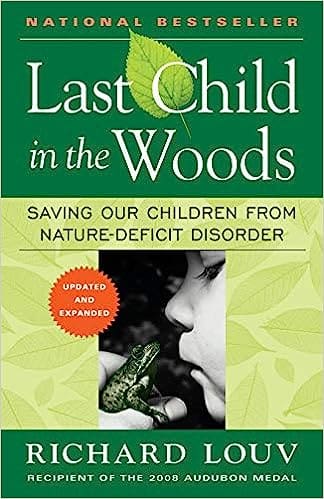
Featured Product: Last Child in the Woods: Saving Our Children from Nature-Deficit Disorder ↗ by Richard Louv
In order to foster a love for our planet and instill the importance of biodiversity conservation, we must start with the younger generations. “Last Child in the Woods” is a powerful read that emphasizes the crucial role of nature in child development and highlights the importance of nurturing a strong connection with the natural world. This connection, in turn, can inspire future stewards of biodiversity conservation. Click to learn more and embark on a journey towards a better understanding of our relationship with nature.
Introduction
Biodiversity, or biological diversity, refers to the myriad of life forms on Earth, from the genetic level to species and ecosystems. Today, there’s an urgent need for every one of us to understand a critical issue: the rapid loss of biodiversity. Species are going extinct at a rate thousands of times faster than natural evolution due to human activities. This blog post aims to highlight the key aspects of biodiversity conservation that everyone needs to know, emphasizing the urgent need for action to protect our planet’s rich biological resources.
Understanding Biodiversity
Biodiversity is not just about the number of species; it also includes genetic diversity within species and the variety of ecosystems that species create. Each species, no matter how small, has a role to play in the ecosystem. For example, bees pollinate flowers, which helps plants reproduce. These plants then provide food and habitat for other species.
The current status of biodiversity is alarming. We are losing species at a rate 1,000 to 10,000 times higher than natural background rates. In light of this, understanding and conserving biodiversity becomes even more crucial.
The Importance of Biodiversity Conservation
Biodiversity has immense value, both in terms of its practical benefits and intrinsic worth. It contributes to medicine and agriculture, with many of our crops and livestock being products of thousands of years of biodiversity. Additionally, many potential medical treatments are housed within the genetic codes of plants, animals, and fungi.
Biodiversity also plays a crucial role in climate regulation, water purification, nutrient cycling, and soil formation. For instance, forests act as carbon sinks, absorbing CO2 and mitigating the impacts of climate change.
Moreover, there is an ethical argument for biodiversity conservation. We share the Earth with other species, all of which have a right to exist. The loss of biodiversity and the resulting impact on ecosystems can also adversely affect human populations, particularly those who rely directly on natural resources.
Threats to Biodiversity
Biodiversity is under threat from a variety of human activities. Habitat loss and fragmentation, driven by deforestation and urbanization, are leading causes of biodiversity loss. Climate change also poses a significant threat, altering habitats and disrupting ecosystems.
Overexploitation, through practices like overfishing and hunting, can lead to species extinction. Invasive species introduced by human activity can out-compete native species, while pollution can harm or kill species directly.
For a more visual understanding of these threats, I recommend this informative Youtube video ↗ by The Biodiversity Group.
Conservation Strategies
Biodiversity conservation involves protecting and managing biological resources to ensure their sustainable use. Strategies include setting up protected areas, implementing legislation, promoting sustainable practices, and engaging local communities in conservation.
Protected areas and wildlife reserves have shown success in safeguarding habitats and species. Legislation and policy can also provide legal protections for biodiversity. Sustainable practices in agriculture, forestry, and fishing can help conserve biodiversity by reducing environmental impacts.
Community-led conservation can empower local people to manage their resources sustainably. For instance, they can be involved in species reintroduction programs, like the successful reintroduction of the Grey Wolf in Yellowstone National Park.
The Role of Individuals in Biodiversity Conservation
Each of us plays a role in biodiversity conservation. Simple actions like reducing, reusing, and recycling can lessen our environmental impact. Supporting sustainable businesses and practices also contributes to conservation.
Education is key. By learning about biodiversity, we can make informed decisions and inspire others. A great starting point is the book “The Diversity of Life” by Edward O. Wilson, available on Amazon.ca ↗.
We can also get involved in local conservation efforts, whether by volunteering or participating in citizen science projects. Every action counts.
Conclusion
Biodiversity conservation is a pressing issue. It’s not just about saving species; it’s about preserving the intricate web of life that sustains us all. We need collective action, from individuals, communities, and governments, to turn the tide.
By appreciating the value of biodiversity and understanding our role in its conservation, we can contribute to a sustainable future. Let us tread lightly on our planet, for the sake of all life that calls it home.
Related Articles
We appreciate your time and interest in our article, “The Importance of Biodiversity Conservation You Need to Know.” This topic is of significant consequence and deserves both attention and widespread discussion. For further exploration, we recommend these related articles from sunnydaysgo.com that might pique your interest:
- Sustainable ↗: A glossary term that delves into sustainable practices and their importance.
- Conservation Initiatives in Alberta’s Public Land Use Zones (PLUZs) ↗: A look at eco-preservation efforts in Alberta’s public lands.
- Chapter 4: Uncovering the Truth ↗: A chapter from our series that reveals some enlightening facts.
- Easy & Proven Way To Building Good Habits with “Atomic Habits” ↗: A guide that offers a proven approach to developing positive habits.
- Chapter 6: A United Effort – The Power of Wildlife Teamwork ↗: Another chapter from our series showcasing the power of collective efforts in wildlife conservation.
